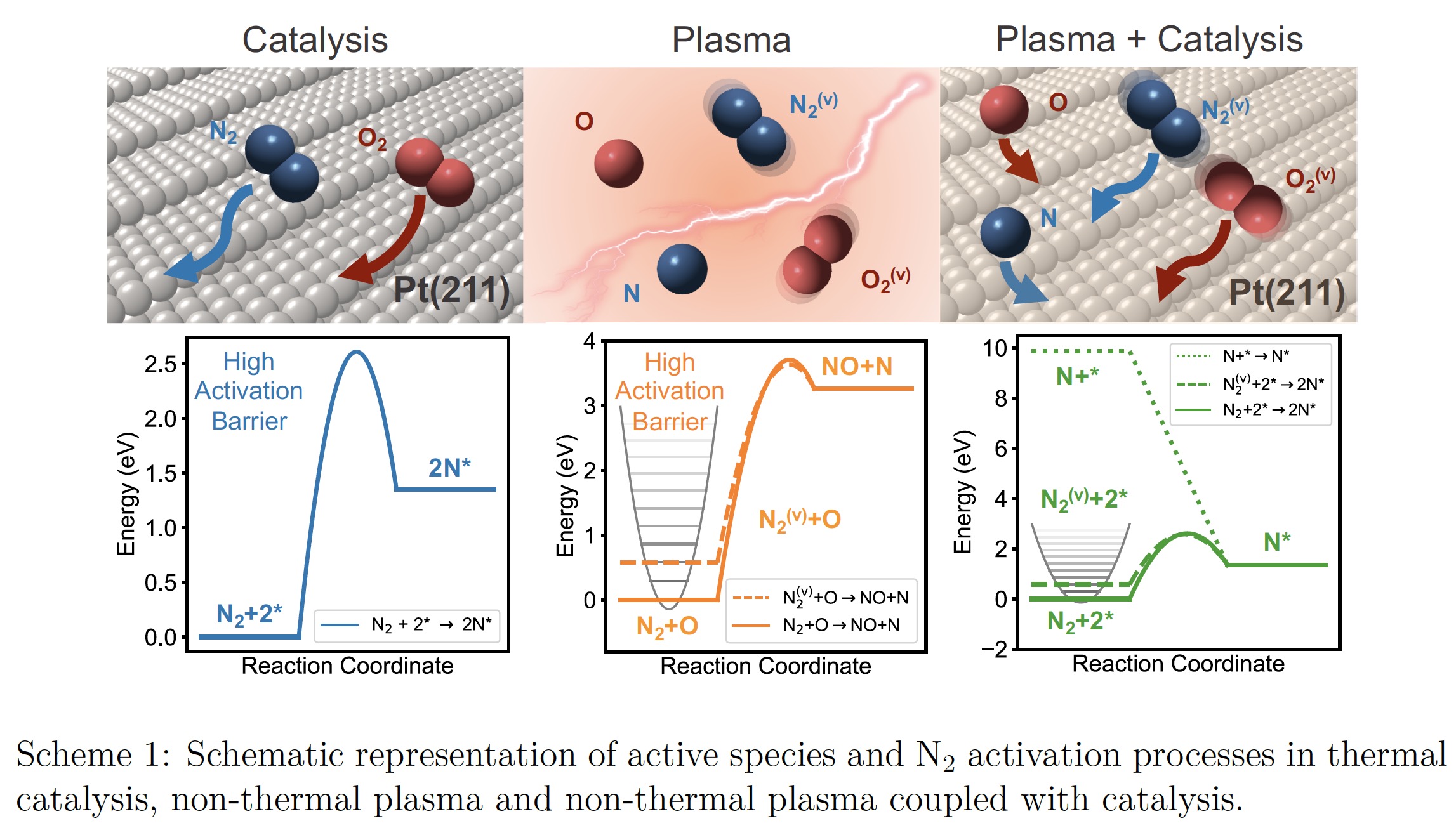(513fm) Enhancing Potential of Catalysts for Plasma Nitrogen Oxidation
AIChE Annual Meeting
2020
2020 Virtual AIChE Annual Meeting
Catalysis and Reaction Engineering Division
Nitrogen Chemistry I: Nitrogen Reduction and Fixation
Wednesday, November 18, 2020 - 10:00am to 10:15am
N2 fixation is a central process in the production of fertilizers and chemicals. The Birkeland-Eyde (B-E) process, an early attempt to fix nitrogen synthetically, used an electric arc thermal plasma to reach the high temperatures necessary to push the N2/O2 equilibrium in air towards NO. B-E proved too energy intensive and low yield to compete with the Haber-Bosch (H-B) process. Models and experiments both indicate that the energy costs to oxidize N2 to NO can be reduced in a lower-temperature, non-thermal plasma (NTP). Models suggest that energy consumption can be reduced by more than 2.5-fold relative to the H-B process. Realizing this theoretical limit is challenging for NTP alone, partly because of the low NO production rate. Empirical evidence suggests that NO production can be increased through coupling of the NTP with a catalyst, but the nature and role of the catalytic enhancement remains unknown. Here we use microkinetic models to compare N2 oxidation rates and conversions in a non-thermal plasma, catalyzed thermally, and with the two combined. We included important active species produced in a NTP and parametrized the catalytic model with DFT-computed data for a stepped Pt surface. The turnover frequency at zero conversion over Pt increases substantially over the thermal-only chemistry with the incorporation of dissociated N and O and vibrational excited N2 and O2 at levels expected to be present in the plasma. Similarly, at finite conversion, as simulated in a continuous stirred-tank reactor model, both dissociated and vibrational excited N2 and O2 increase the NO production on Pt. We discuss implications for application of plasma catalysis to N2 oxidative fixation.


